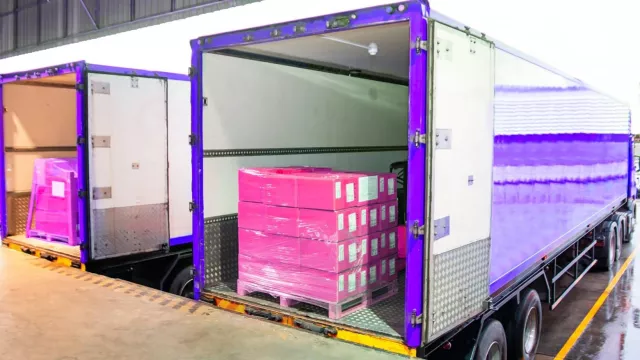How can collaboration improve your trade workflows?

Reducing the friction in trade finance: the role of digital networks
Trade finance is one of the corporate banking processes that has been slower to transform in comparison to the pace of digitization across the rest of the industry. Compared with processes such as payments and settlements, trade finance transactions still rely on paper documentation in many cases, leading to delays and errors.
However, trade finance represents a huge opportunity for banks, as well as other participants in the supply chain, to achieve efficiencies and grow income. So what are the biggest hurdles that still exist, and how could alternative approaches such as interconnected digital networks help to address them?
Michael Vrontamitis, Lead Industry Principal for the Lending business at Finastra, says that the key challenge that most participants in the trade finance ecosystem have is how they connect to each other.
“A lot of transactions still default to paper,” he says. “That's the reality of many interactions in the trade space, unfortunately. It seems obvious, but couriers delivering documents, people processing them and forms sitting in someone's drawer for a few days just adds friction to that process. So digitizing it with an end-to-end process is really key to driving efficiencies.”
Navigating digital islands
Where banks do have digitized processes, this has often resulted in the adoption of ‘digital islands’ which are not interoperable and therefore not cost-effective, adds Vrontamitis.
Banks would like to reduce their operational costs by having a standard trade finance service they could offer to all of their corporate customers, but having a single global network with all data held in one place is no longer tenable in the present day.
With Finastra’s decentralized technologies, banks can choose where in the world they store data, how they host it and in which country it should reside in order to meet regulatory obligations.
“If you don’t have all of your data sitting in one place, you avoid systemic risks,” Vrontamitis explains. “And if data is digitized, banks can eliminate paper and reduce friction. The other key benefit is the ability to make better credit decisions. At the moment, data is difficult to access, but if it’s in a digital format, banks can build credit models, hold less capital and increase profitability.”
The need for legal entity identifiers
Digitized systems will also enable banks to broaden the trade finance services they offer to corporates, because data will be more accessible. But the key to success with the decentralized model will be the introduction of legal entity identifiers, says Vrontamitis.
“A legal entity identifier will enable counterparties to digitally understand who they are dealing with, and who owns each counterparty,” he says. “It will enable banks to on-board suppliers much more quickly once they have signed a contract with a buyer, then execute the contract and get paid earlier. Getting that digital ecosystem working efficiently will have huge benefits for all participants in the supply chain.”
Joshua Kroeker, Chief Product Officer at trade finance network Contour, agrees that a digital future will bring advantages to corporates as well as banks.
“Right now, a letter of credit is a trusted and secure way of doing international trade, especially if it’s a new relationship or there’s some uneasiness about a transaction,” he says. “But that security is provided by paper-based processes. We want to move away from those disconnected processes and put it all into a connected network for both banks and corporates. We’ve had corporates saying this is reducing their overall process by 90%.”
Contour is partnering with Finastra to open up access to digital trade finance networks, Kroeker explains: “The great thing about Finastra is that it has been providing banking software to banks for a very long time, while we have hundreds of banks using our trade software. Where Finastra adds value is around the orchestration of an open platform for banks to be able to access multiple points in each transaction. This makes it much simpler for banks to accept instructions from their corporate clients.”
Accelerating adoption
The partnership between Finastra and Contour will accelerate the adoption of digital networks in the trade finance ecosystems, adds Kroeker. Growing at scale will be easier when the hundreds of banks already using Finastra can connect to Contour without having to learn a new system, while gaining access to new functions and features, as well as improved efficiency.
“Finastra really is a leader in this space,” he says. “They’ve seen the value of connecting to the customer network and built the integration with Contour without waiting for banks to request it. It means banks don’t have to wait for another six or nine months to digitize their letter of credit business: they can start right now.”
It’s a further step for Finastra in its quest to help financial institutions embrace the ecosystem that surrounds them, concludes Vrontamitis, whether that’s embedding finance or connecting to digital platforms.
“We’re really excited about exploring how to embed Contour offerings into the corporate channel, as well as other bank channels around the world,” he says. “All of a sudden, people will just start using Contour without having to make a big decision to switch – and we as Finastra become the pipes that will power the future of trade finance digitization.”


